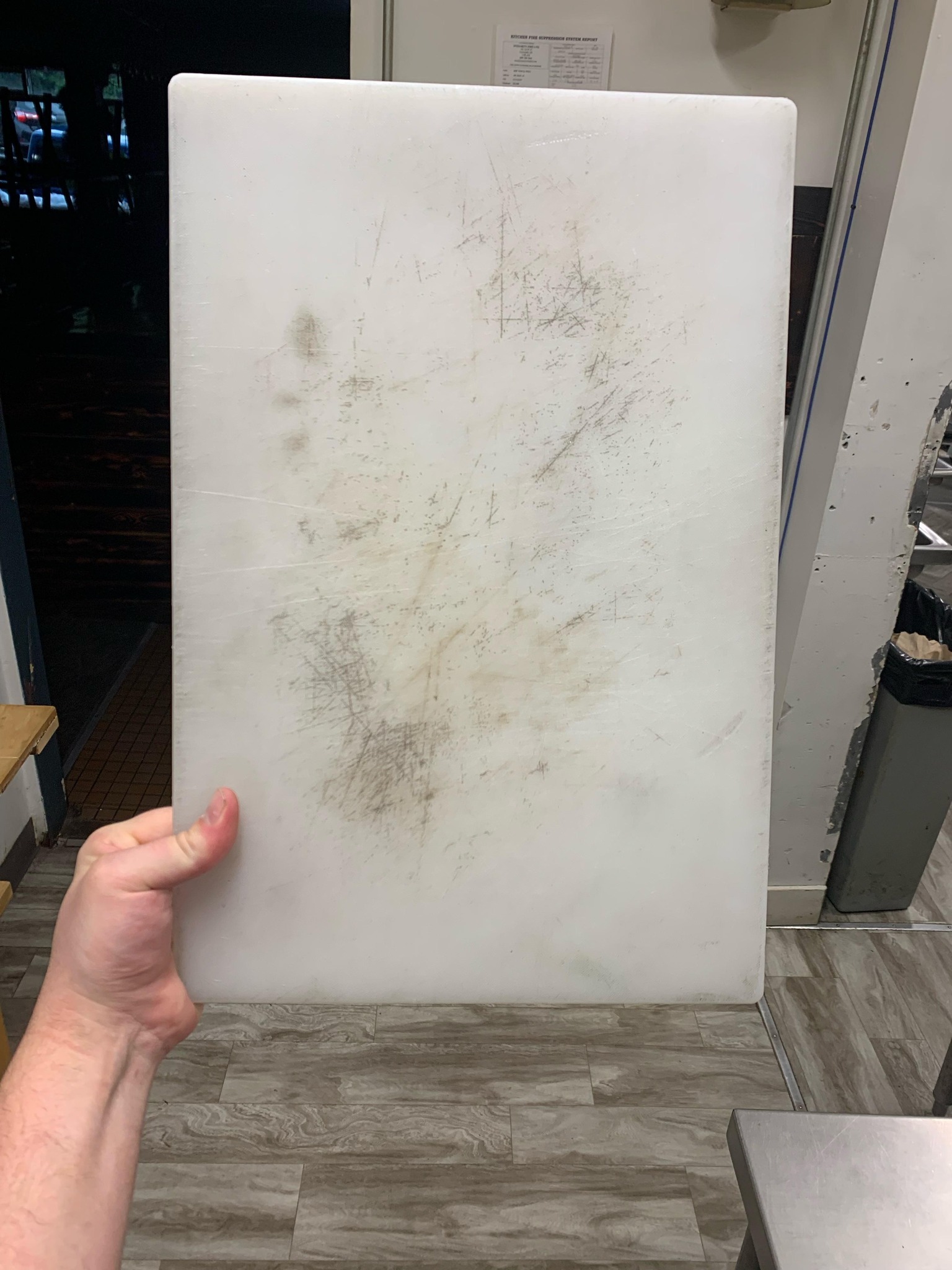Plastic cutting boards are a staple in most kitchens. They’re durable, easy to care for, and can withstand daily chopping and slicing. However, without proper maintenance, these boards can become a hotspot for bacteria, unpleasant stains, and persistent odors. Keeping your cutting boards clean is essential not just for food safety, but also for extending their lifespan. Here’s a comprehensive guide on how to effectively clean and maintain your plastic cutting boards.

1. Basic Cleaning Method: Your First Line of Defense
Materials Needed:
- Dish soap
- Warm water
- Sponge or soft cloth
The simplest way to keep your plastic cutting board in good shape is to clean it immediately after each use. Start by rinsing the board under warm water to remove any loose food particles. Next, apply a few drops of dish soap and scrub the board thoroughly using a sponge or soft cloth. Be sure to focus on any grooves or cuts, as these can trap food residue and bacteria. Once scrubbed, rinse the board with warm water and let it air dry completely. This basic cleaning routine is essential for preventing bacterial buildup.
2. Tackling Tough Stains and Odors with Vinegar and Baking Soda
Materials Needed:
- White vinegar
- Baking soda
- Scrubbing pad
For cutting boards with stubborn stains or lingering smells, a combination of baking soda and vinegar works wonders. Begin by creating a paste with baking soda and a bit of water. Apply the paste to stained areas and use a scrubbing pad to work it in. This helps lift stains and eliminates odors.
Alternatively, you can spray white vinegar directly onto the board. Let it sit for a few minutes to allow the vinegar’s natural acidity to disinfect the surface and neutralize odors. Afterward, rinse thoroughly with warm water. This method is both eco-friendly and highly effective for keeping your board fresh.
3. A Natural Solution: Cleaning with Lemon Juice and Salt
Materials Needed:
- Lemon
- Coarse salt
For those who prefer a more natural approach, lemon juice and coarse salt can clean your cutting board effectively. Start by sprinkling a generous amount of coarse salt over the board. Cut a lemon in half and use it as a scrubber, pressing the salt into the board. The lemon’s acidity helps kill bacteria, while the coarse salt acts as an abrasive to remove grime. After scrubbing, rinse thoroughly with warm water. This method not only cleans but also leaves a refreshing citrus scent.
4. Deep Cleaning with Hydrogen Peroxide
Materials Needed:
- Hydrogen peroxide (3% solution)
- Spray bottle
If you’ve been cutting raw meat or fish, a deeper clean may be necessary. Hydrogen peroxide is an excellent disinfectant that can eliminate bacteria. Pour hydrogen peroxide into a spray bottle and generously spray the entire surface of your board. Let it sit for about 5-10 minutes to disinfect thoroughly. Rinse well with warm water and let it air dry. Hydrogen peroxide is particularly effective at removing both bacteria and odors, ensuring your cutting board is safe for your next use.
5. Using the Dishwasher: The Easy Sanitizing Method
Most plastic cutting boards are dishwasher safe, making them convenient to clean. Place your cutting board on the top rack of your dishwasher and run it through a regular cycle with your usual detergent. The high heat and powerful water jets will sanitize the board thoroughly, especially after handling raw meats. However, always check the manufacturer’s instructions to ensure your board can withstand the heat of the dishwasher without warping.
6. Essential Maintenance Tips to Extend the Life of Your Cutting Boards
To keep your plastic cutting boards in great shape, follow these maintenance tips:
- Clean Immediately After Use: Rinse and wash your board right after using it to prevent food particles from drying onto the surface. This will prevent stains and odors from setting in.
- Use Separate Boards for Different Foods: To reduce the risk of cross-contamination, use one board for raw meats and another for fruits and vegetables. This helps keep your food safe and your boards cleaner.
- Replace Worn-Out Boards: Over time, plastic boards develop deep cuts that can harbor bacteria, even after thorough cleaning. If your board has noticeable grooves, persistent stains, or odors that won’t go away, it’s best to replace it. Regularly inspect your boards to ensure they’re still safe for food prep.
Conclusion: Keep Your Cutting Boards Clean and Safe
By following these cleaning techniques, you can ensure that your plastic cutting boards remain hygienic and in excellent condition. Regular cleaning not only protects your food from harmful bacteria but also extends the life of your cutting boards, keeping your kitchen fresh and ready for your next meal. Whether you prefer the simplicity of dish soap, the natural power of lemon and salt, or the deep-cleaning action of hydrogen peroxide, these methods will help keep your boards in top shape.
So, the next time you prepare a meal, you can have confidence knowing your cutting board is thoroughly cleaned and sanitized. Taking a few extra minutes to maintain your boards will go a long way in keeping your kitchen safe and your meals healthy. Happy cooking!